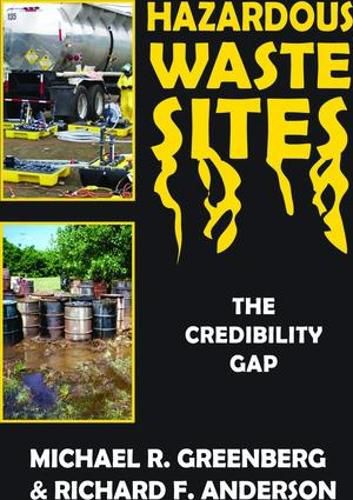Readings Newsletter
Become a Readings Member to make your shopping experience even easier.
Sign in or sign up for free!
You’re not far away from qualifying for FREE standard shipping within Australia
You’ve qualified for FREE standard shipping within Australia
The cart is loading…






Mutual distrust defines the relationship between those who are the sources of hazardous wastes and those who oversee their activities. A lack of credibility, argue the authors, is a formidable, if not the biggest, obstacle to properly managing hazardous waste in the United States. Nowhere is the credibility gap wider than where there are hazardous waste management facilities or where sites have been proposed.
The purpose of this book is to provide comprehensive perspectives on hazardous waste sites in the United States. The sources of hazardous waste are described along with the scientific and legal climates that allowed wastes to be discarded with little attention to impacts. Evidence is weighed for and against public health, as well as environmental, economic, and social damages at abandoned sites. Political processes and analytical techniques are suggested and illustrated for those who are involved in the siting of new facilities. A strategy for hazardous waste management is offered, together with approaches to substantially reduce the difficulties faced by local planners and site managers who face a hostile public.
A historical legacy of mismanagement, fueled by exaggeration of impacts and by a lack of information, characterizes hazardous waste management in the United States. This book will be important to planners, environmental scientists, and public health officials. In order to assure accessibility for the casual reader, the authors keep the explanation of mathematical methods and technologies in this area to a minimum.
$9.00 standard shipping within Australia
FREE standard shipping within Australia for orders over $100.00
Express & International shipping calculated at checkout
Mutual distrust defines the relationship between those who are the sources of hazardous wastes and those who oversee their activities. A lack of credibility, argue the authors, is a formidable, if not the biggest, obstacle to properly managing hazardous waste in the United States. Nowhere is the credibility gap wider than where there are hazardous waste management facilities or where sites have been proposed.
The purpose of this book is to provide comprehensive perspectives on hazardous waste sites in the United States. The sources of hazardous waste are described along with the scientific and legal climates that allowed wastes to be discarded with little attention to impacts. Evidence is weighed for and against public health, as well as environmental, economic, and social damages at abandoned sites. Political processes and analytical techniques are suggested and illustrated for those who are involved in the siting of new facilities. A strategy for hazardous waste management is offered, together with approaches to substantially reduce the difficulties faced by local planners and site managers who face a hostile public.
A historical legacy of mismanagement, fueled by exaggeration of impacts and by a lack of information, characterizes hazardous waste management in the United States. This book will be important to planners, environmental scientists, and public health officials. In order to assure accessibility for the casual reader, the authors keep the explanation of mathematical methods and technologies in this area to a minimum.